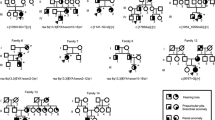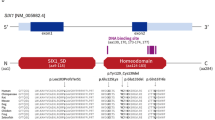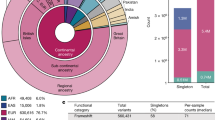Abstract
Advances in molecular genetics have recently revealed that mutations in the EYA1 gene are responsible for branchio-oto-renal (BOR) syndrome in European and other populations. This is the first report confirming that an EYA1 gene mutation is also disease-causing in an Asian population. We have described one Japanese BOR syndrome family showing a novel mutation in exon 7 of the EYA1 gene. There was extensive variation of clinical phenotypes within this family. When the physician is confronted with a BOR family showing a wide variation in clinical expression, molecular genetic testing helps to achieve accurate diagnosis.
Similar content being viewed by others
Log in or create a free account to read this content
Gain free access to this article, as well as selected content from this journal and more on nature.com
or
Author information
Authors and Affiliations
Additional information
Received: February 23, 1999 / Accepted: April 2, 1999
Rights and permissions
About this article
Cite this article
Usami, S., Abe, S., Shinkawa, H. et al. EYA1 nonsense mutation in a Japanese branchio-oto-renal syndrome family. J Hum Genet 44, 261–265 (1999). https://doi.org/10.1007/s100380050156
Published:
Issue date:
DOI: https://doi.org/10.1007/s100380050156
This article is cited by
-
The term CAKUT has outlived its usefulness: the case for the prosecution
Pediatric Nephrology (2022)
-
Identification of a novel nonsynonymous mutation of EYA1 disrupting splice site in a Korean patient with BOR syndrome
Molecular Biology Reports (2014)
-
EYA1 and SIX1 gene mutations in Japanese patients with branchio-oto-renal (BOR) syndrome and related conditions
Pediatric Nephrology (2006)
-
Genomic rearrangements of EYA1 account for a large fraction of families with BOR syndrome
European Journal of Human Genetics (2002)



